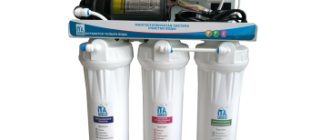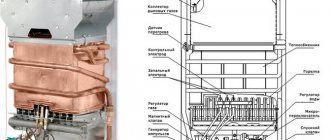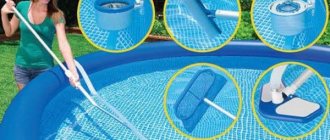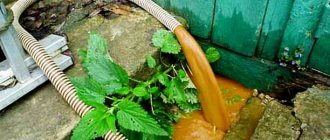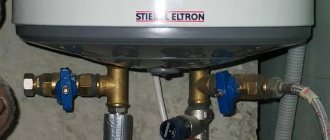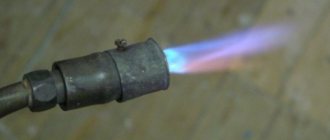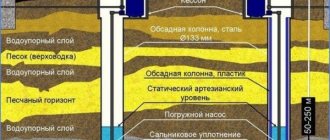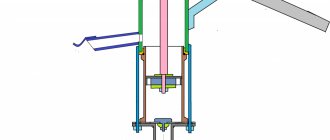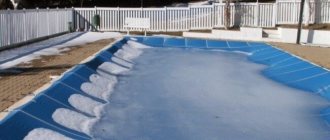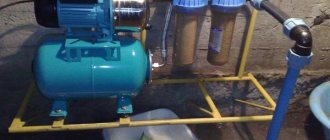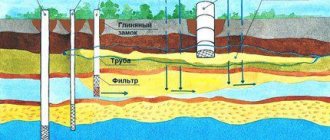My first material, a comparison of household water filters “Who muddies the water,” was prepared in the heat of the moment by a migrant researcher.
When you first move into your own apartment, you begin to pay attention to the little things - because you are making and buying for yourself, and you need everything to last forever. In the post, I shared my experience of comparing jug filters and sorption flow filters from different manufacturers. Initially there were no plans to wake up militant commentators... And then they knocked on the personal door and said: “Write again, you will be a guest!” And I wrote. My name is Dmitry Mikhailenkov, I work at a chemical industry enterprise, therefore, in everyday life, chemistry is a subject of close personal interest for me. The first material was born from a comparison of household water filters that I conducted in search of the optimal solution for my new apartment. In that post, my colleague and I compared pitcher and sorption flow filters from different manufacturers, and also shared our conclusions with readers. To be honest, I did not expect that the material would arouse such interest on Geektimes and collect so many comments. And what I definitely didn’t expect was that the manufacturers of the filters studied and analyzed in that article of ours would respond so quickly. However, representatives of Aquaphor approached me (their developers also read Habr) and invited me to become a guest on their blog. Naturally, I didn’t refuse. In the comments to the first comparison, many readers asked why I didn’t compare reverse osmosis filters. The answer is simple: the cost of each is around 7-8 thousand rubles. I am, of course, an enthusiast, but not to such an extent that I would part with such a large sum for the sake of an interesting experiment and a useful article.
In general, the cards aligned: I agreed to write for the Aquaphor blog on the condition that they would give me a sample of their most advanced reverse osmosis filter, Aquaphor Morion, and cover the cost of purchasing an opposing filter for the upcoming comparison.
I chose Aquaphora’s opponent at my own discretion - I liked Barrier Profi Osmo 100, which, judging by the reviews on Yandex.Market, is very popular. This filter is an example of a high-quality “standard” reverse osmosis filter, in my opinion, an excellent competitor for Aquaphor Morion. Moreover, both are in the same price category “about 8,000 rubles.”
But first of all, before we begin the comparison, I will conduct a small educational program for those who are completely out of the loop.
What are the benefits of reverse osmosis filters?
Household filters for additional purification of drinking water can be divided into three types.
First view. Filter jugs. They are the cheapest, they are mobile. Jug filters purify water from chlorine, rust, heavy metals and organic matter. But, if you have to soften hard water, the jug cartridges do not remain effective for long; they will have to be changed very often. And jugs cannot cope with biological contamination - the water after them needs to be boiled, especially if you are not sure of its bio-safety. They took it from a well, for example.
Second view. Flow-through sorption filters that are connected to the water supply (usually in the kitchen under the sink). Such filters provide good water purification from most pollutants - the percentage of purification from chlorine, rust, heavy metals and organics is much higher with stationary filters. Compared to jugs, they can purify water from hardness salts over a longer period of time. But they do not purify water from viruses, and require frequent regeneration of softening cartridges.
And finally, the third type. Reverse osmosis filters purify water from all impurities AT ALL. Removing 100% of hardness salts, 100% of rust, 100% of heavy metals, 100% of bacteria and parasitic cysts from water. Reverse osmosis even traps viruses, something no other type of household water purification system can handle. The output from the reverse osmosis filtration system produces the purest water possible, which can be safely and without harm to your health drunk without boiling - this is H20 in its pure form.
Fact for bottled water lovers: most brands of bottled drinking water on sale are regular tap (or artesian) water, purified in a reverse osmosis filter, and flavored with a small amount of mineral impurities to give a pleasant taste. Moreover, we are talking about both water for 30 rubles/liter and many “premium” waters for 200-400 rubles/liter. The real cost of such water is 0.5-0.7 rubles per liter. Pure scam, so to speak.
Some information from history
In nature, the phenomenon of osmosis is quite widespread.
At the macro level, an example of an osmotic membrane is the shell of a chicken egg, which easily allows water or air molecules to pass through, while retaining larger molecules of various chemicals, such as sugar or heavy metal salts.
At the micro level, the phenomenon of osmosis is used by any living cell whose membrane is permeable to water, but does not allow various impurities to pass through.
Man discovered the manifestations of osmosis quite a long time ago.
Aristotle also observed the desalination of sea water when passing through the walls of a vessel made of wax.
In the 18th century, this phenomenon was observed by Reaumur , using natural semi-permeable membranes in research.
Osmosis research entered a new stage of practical importance in the 20s of the 20th century.
As a result, the first artificial membranes were created in Germany in 1927.
But the phenomenon came to be widely used only in the 50s-60s of the last century, when the technology for the production of polymer materials made it possible to create semi-permeable membranes with specified characteristics.
At this time, many scientific studies were carried out, which became the foundation for the use of the reverse osmosis phenomenon.
Already in the early 70s, the first industrial installations implementing these technologies appeared.
What do you know about thermal insulation for heating pipes with foamed polyethylene? This useful article describes the characteristics of insulation and methods of its installation on existing highways.
How to replace a toilet yourself is written here.
On the page: https://ru-canalizator.com/kanalizatsiya/vygrebnaya-yama/ventilyatsija.html you will find out whether ventilation is needed for the sewerage system.
Since then, improved technology has become one of the main methods of water purification in many Western countries.
Reliability, versatility, cost-effectiveness and, most importantly, the highest level of purification (reverse osmosis allows you to remove up to 99% of impurities in water and 100% of microorganisms) ensure its widespread use in industrial and domestic installations today.
Why are reverse osmosis filters bad?
Reverse osmosis also has disadvantages: reverse osmosis systems usually require a pressure of at least 3 atmospheres in the water supply, because the water must pass through the membrane under pressure.
Cleaning is tens of times slower than in sorption flow filters. In order not to force the user to wait until a glass of water is collected drop by drop, reverse osmosis filters are equipped with storage tanks. It is precisely because of the bulky tanks that reverse osmosis systems take up a lot of space under the sink - 2-3 times more than sorption filters. Well, the most important drawback for the average consumer: reverse osmosis filters cost around 7-8 thousand rubles.
Sorption filters for installation under the sink, for comparison, will cost 4-5 thousand rubles, jugs are even cheaper - 400-800 rubles. But reverse osmosis systems are worth the money, because, I repeat, only they provide complete purification of water from any pollutants.
Technical description of the system
The term "osmosis" is of Greek origin (originally meaning push, pressure), and is used to refer to the process of one-way diffusion through semi-permeable membranes under the influence of various factors.
For example, forward osmosis is the phenomenon of equalizing the concentrations of solutions separated by such a membrane. Reverse osmosis (what is it) works on a slightly different principle, which we will discuss in detail.
Osmosis is one of the manifestations of the La Chatelier-Brown principle, which states that when a system that is in stable equilibrium is influenced from the outside, processes will begin in it aimed at restoring equilibrium (compensating for the influence).
The equilibrium conditions can be different - temperature, pressure, electromagnetic field strength.
For the phenomenon of osmosis, such a condition is the concentration of the solution.
Two solutions with different concentrations of the dissolved substance, separated by a semi-permeable membrane, precisely represent a system in which the equilibrium condition is violated.
Semi-permeable is a membrane that allows only molecules of certain substances to pass through.
Different concentrations of solutions mean that the pressure created by the solvent molecules in a solution with a higher impurity content is greater than in one where the amount of impurities is lower.
What do you know about the design and repair of a ball valve? For a detailed technical description and step-by-step instructions for disassembling and assembling a shut-off valve element, read this useful article.
How to install a toilet with a horizontal outlet yourself is written on this page.
This pressure difference causes the movement of solvent molecules across the membrane and is called osmotic pressure.
When the concentrations of both solutions are equalized, the system will come into equilibrium and diffusion of the solvent through the membrane will stop.
If you create an excess pressure in a solution with a high concentration of impurities that exceeds the osmotic value, the process of diffusion of solvent molecules from a solution with a higher concentration into a solution with a lower one will begin.
In the opposite direction to the direction of osmosis. This phenomenon is called reverse osmosis .
How does a reverse osmosis membrane work?
Despite their effectiveness in water purification, reverse osmosis membranes are quite sensitive to oxidizing agents (chlorine) and sediments, such as colloidal iron, which can “stain” the surface of the membrane. Therefore, reverse osmosis filters have pre-mechanical and sorption purification modules that filter chlorine, sand, dirt and mucus. After pre-treatment, the water enters the module with the membrane.
To explain the principle of operation of a reverse osmosis membrane, we can give a simple example: a juicer. Pre-purified water is fruit, a filter is a juicer, completely pure water is juice. Only, unlike a juicer, the membrane can “squeeze out” not only “pulp,” which is an analogue of undissolved impurities, but also substances that are dissolved in water.
Water with impurities is pressed under pressure through a rolled membrane. All the impurities—absolutely everything! — remain on the membrane itself, allowing exclusively clean water to pass through. Another stream of untreated water passes along the membrane, washes away all impurities from it and sends them to the sewer. To get 1 liter of clean water, some filters consume as much as 10 liters of drainage water to flush the membrane.
The membrane itself, when unrolled, is nothing interesting - a thin polymer material that feels like masking tape to the touch. The photo below shows a piece of membrane from a disassembled filter module in the hands of my wife, who watched our experiment with interest.
As mentioned above, so that people do not have to wait for the membrane to filter the water, reverse osmosis filters have special tanks in which purified water accumulates. Tanks range from 3 to 18 liters in volume. The most common tanks have a volume of 18 and 12 liters. And they hold 12 and 9 liters of clean water, respectively - at least a third of the tank is occupied by air, under the pressure of which the water undergoes post-filtration and is supplied to a separate tap. The system is called a water-air tank.
Purification stages
The reverse osmosis operating diagram is as follows:
- First, the water undergoes preliminary purification in tanks.
- From there it goes to a semi-permeable barrier, where it is divided into two directions: one passes through the cells, and the other washes them from the outside and drains into the drain with all the debris particles.
- Next, the liquid goes through a post-purification stage in a special container, where all foreign odors are removed and mineralization is carried out.
According to this technology, maximum contaminants are removed from the natural resource, ensuring purity of 99.9 percent.
Not all membranes are equally useful?
It turns out that none of the manufacturers of household filters produces reverse osmosis membranes on their own; they are ordered from foreign suppliers. There are more expensive membranes, there are cheaper ones, but there is almost no global difference in terms of water purification efficiency between different models of reverse osmosis filters. That is, the colorful experiments with different solutions that we carried out during the previous test will not give noticeable results when comparing reverse osmosis filters.
But do reverse osmosis filters really differ only in names and price tags? Practice has shown that no. Having studied reviews on Yandex.Market, I discovered several important criteria for comparing reverse osmosis systems:
- Dimensions. Many people have small kitchens, small sinks, and there is simply not enough space for a filter with a tank under the sink. Or there is enough, but I want to place something else there besides a filter.
- Cleaning speed. Let's say you need more water than is in the storage tank - you will have to wait a long time for it to fill up again.
- Water consumption. Of course, we don’t live in Europe, and tap water costs pennies. But if it is possible to buy a filter with a drainage to purified water ratio of 5 to 1 instead of 10 to 1, why not save money? Moreover, water in almost all new houses is now metered, and, as you know, a penny saves a ruble. Let me remind you that drainage water first consumes the resource of the pre-treatment modules. This directly impacts point #4.
- Cartridge life. Of course, I want the cartridges to last longer, because they are not cheap - from 800 to 1,800 rubles, depending on the manufacturer and type of cartridges.
- Easy to maintain. Calling a specialist once to install the filter is all right. But calling a technician to replace modules or bothering with the key yourself is no longer very convenient. It’s more convenient when you can do everything with your bare hands: simply and quickly.
- Based on these criteria, we decided to compare reverse osmosis filters.
Criterias of choice
So, let's look at the question - what to look for when choosing a water filter with reverse osmosis.
The first thing you should be interested in is the mineralizer. It is better not to buy a filter without it. Also remember that a modern osmotic filter is a device with five degrees of purification. That is, there should be three filters in the form of vertical flasks at the input. Then a device with a membrane. And the last is another horizontal fine filter. This is the most effective model to date.
Some models are equipped with structurers. It should be noted that water that has passed through a reverse osmosis filter cannot be called biologically active. Therefore, it needs to be structured again. For this purpose, another element is installed in the device. It contains bioceramic cartridges or tourmaline fillers.
The task of the two substances is to purify water from pesticides, bacteria, heavy metals, chlorine and other things. At the same time, the taste of the water becomes pleasant. Let us add that the structurer has a fairly serious service life - 2 years.
And, of course, be sure to read the instructions for the filter you purchase. Just make sure that it can be used to carry out all levels of water purification.
Practice: comparing filters
As I said earlier, Aquaphor Morion (8,490 rubles) and the Barrier Profi Osmo 100 filter (8,190 rubles) participated in the comparison of the efficiency and economy of reverse osmosis systems.
While I was preparing the material, both Aquaphor and Barrier went up slightly in price. Thanks to the reader who pointed out this flaw. I replaced the price tags above with current ones. Dimensions
“Aquaphor Morion” has dimensions of 37.1 x 42 x 19 cm. At first I thought that they forgot to put the clean water tank in the box, but it turns out that a five-liter container is already built into the case. That is, these dimensions are already taking into account the tank. At the same time, the Barrier filter has dimensions of 38.5 x 44.5 x 13 cm, and comes with a 12-liter tank with a diameter of 23 cm and a height of 39 cm. You can evaluate the difference in dimensions from the photo below:
From left to right: “Aquaphor Morion” in profile, “Aquaphor Morion” in front (this is not one filter made of two parts, but two separate filters from different angles), and “Barrier Profi Osmo 100”.
Cleaning speed
The membranes in the compared filters differ in their declared performance. The Aquaphor filter uses a 50-gallon membrane (50 gallons = 189 liters per day). The Barrier filter has a 100-gallon membrane (378 liters of water per day). Logically, it should be twice as high.
To evaluate the actual filtration rate (and not the rate of water supply from storage tanks), we began the test with an empty storage tank for both filters. The cleaning speed of the Aquaphor and Barrier filters differs by 1.5 minutes/liter: Aquaphor cleans a liter of water in 7.5 minutes (8 liters per hour), Barrier - in 6 minutes (10 liters per hour ). In principle, these figures are close to the 7.8 liters per hour declared on the manufacturers’ websites for Aquaphor and 12 liters per hour for Barrier. But, as you can see, there is no twofold difference in performance.
To be fair, it is worth noting that for the Aquaphor Morion model, a 100-gallon membrane is sold separately, which should provide a productivity of 15.6 liters per hour. More productive than the Barrier, and almost 200 rubles cheaper.
Water consumption
The difference in drainage volumes turned out to be significant - you can see it from the photo above. “Aquaphor” consumes 1.3 liters of drainage to obtain 0.75 liters of clean water, “Barrier” - about 2.5 liters. With a different water pressure and with a different water quality, the values may be different, but the ratio of water consumption for drainage between Aquaphor and Barrier should remain the same - 1 to 2 in favor of Aquaphor.
Advantages
- The quality of the water obtained at the output - it can be used as drinking water, used for cooking, given to children and animals. It is much healthier than boiled one.
- Despite the complexity of the system, it is quite compact, and the only visible parts are a convenient faucet on the sink.
- Manufacturers form a kit of all components, including tools and fasteners, ensuring ease of installation.
- All station parts are replaceable. Despite the initial high cost of the set, further expenses will be solely on replacing filters.
- Many installations are equipped with monitoring sensors and signal the need to replace components.
Why such a difference in dimensions, productivity and water consumption?
Aquaphor was able to achieve such a difference in size, speed and efficiency thanks to its own development - a water-water storage tank.
Here is a video that explains and shows in detail the structure of this system: Briefly about the essence: in a conventional reverse osmosis filter, when the tank is completely filled with water, a third of the container remains empty - it is filled with air. That's why these tanks are so big. As clean water accumulates, the pressure in a conventional storage tank increases, causing the filtration rate to become lower and the volume of water discharged into the drainage to increase. In the case of a water-water tank of the Aquaphor Morion system, water is drained from the control cavity without creating resistance, and the filling rate of the tank remains constantly high. This results in high productivity and economical water consumption for drainage. And, by the way, another advantage of the Aquaphor development is relevant for residents of old houses: according to the instructions, the Morion filter can operate at a pressure of 0.2 MPa (about 2 atmospheres), while most reverse osmosis systems require 3 atmospheres or more. For the Barrier involved in the comparison, for example, the operating manual indicates an operating pressure of 3.5 to 7 atmospheres.
Cartridge life
Let's return to the comparison. How long will the cartridges in the Aquaphor and Barrier filters last, and how often do they need to be changed?
“Aquaphor” on its website provides the following figures (based on a family of 3 people): prefiltration modules K5 (315 rubles), K2 (540 rubles) need to be changed twice a year. Post-filtration module K7M (540 rubles) - once a year. The module with a membrane (K50S for 1,895 rubles) needs to be changed every year and a half. Total total expenses per year will be (540 rubles + 315 rubles) * 2 + 540 rubles + 1,895 rubles / 1.5 = 3,513 rubles.
The Barrier website indicates a filter resource of 5 thousand liters, and additionally indicates that for a family of 3 people the cartridges will have to be changed every 160 days (365/160 = 2.3 times a year).
A complete set of 5 cartridges costs 3,190 rubles, respectively, the annual costs will be 3,190 * 2.3 = 7,334 rubles.
A more attentive user will study the catalog on the Barrier website and find that a separate module with a membrane for 2,320 rubles has a service life of 340 days - a little less than a year.
That is, if you don’t fall for the trick of imposing a complete set, but buy modules separately, the annual expenses of a family of three will be (99 + 490 + 139 + 599) * 2.3 + 2,320 = 5,372 rubles.
Naturally, the resource figures indicated by manufacturers are conditional and depend on many factors, for example, pressure and water quality. But the proportion, other things being equal, should remain the same: Aquaphor is at least one and a half times more economical, and its module with a membrane lasts 1.5 times longer than the Barrier.
Why does Aquaphor’s membrane last for a year and a half, while Barrier’s lasts less than a year? Let's take a guess. As mentioned above, a reverse osmosis membrane is a sensitive thing. An important role in the service life of the membrane is played by the quality of the water supplied to this membrane.
Both filters have polypropylene modules for mechanical water purification from sand and rust - they remove the largest particles of pollutants from the water. They are followed by sorption modules - they are similar in design and content to the sorption filter modules that were compared in the previous test. The Barrier has regular granular activated carbon inside its sorption modules. In the sorbent of the Barrier cartridge, water under pressure will be able to flush the channels through which it will pass quickly and without being properly cleaned. That is, over time, water with large particles of pollutants may begin to get onto the Barrier membrane, which negatively affects its service life and the quality of water purification.
Remember this diagram from my comparison test? In the case of Aquaphor, the channel effect cannot be formed due to the use of the company’s own development, a module manufactured using a special technology: granular coal is “sintered” with Aqualen fiber, resulting in a single block. In principle, channels do not form in such material. Accordingly, the membrane in the Aquaphora filter receives cleaner water and lasts longer.
Easy to replace cartridges
There's not much to compare. Replacing modules in the Aquaphor filter is simple: the cartridges are unscrewed like light bulbs. There is no need to come into contact with the contents of the flasks; there is no need to rinse anything.
Video example:
At the Barrier you will have to work with the key and wash the flasks. The installation process is in the video at the link below:
I would especially like to note that when working with cartridges that have been used for a long time, you need to be careful. All cut off bacteria and microbes can remain inside the replaceable module and continue to multiply there. They will not get into the water through the membrane, but if you climb inside the cartridge, be extremely careful.
In general, Aquaphor is decidedly simpler in terms of maintenance: modules can be changed “with a click”, no tools are required. And there is also no need to come into contact with the contents of the cartridges, which is even more important.
The operating principle of a reverse osmosis water purification filtration system with a pump
If the pressure in the water supply pipe is below 2.5 atm, you will have to supplement the equipment with a pump. It allows you to increase the pressure of the supplied liquid and increases the productivity of the cleaning station. This question is relevant for residents of the upper floors of high-rise buildings, as well as areas with old main communications.
At the same time, the supercharger operates completely silently, without creating any inconvenience. The package of such a filter usually includes: a membrane, cartridges, a storage tank, a tap, an installation kit, fasteners and a pump, pressure and dry-running sensors, and a fuse. 5-stage filtration allows you to obtain an almost 100% harmless composition:
- 1—removal of particles ranging in size from 12 to 35 microns using a propylene cartridge;
- 2 – removal of chlorine compounds and organic impurities;
- 3 – additional purification from suspended matter of 1-5 microns in size;
- 4 – cleaning using the reverse osmosis method;
- 5 – improvement of characteristics through activated carbon and other filter elements.
